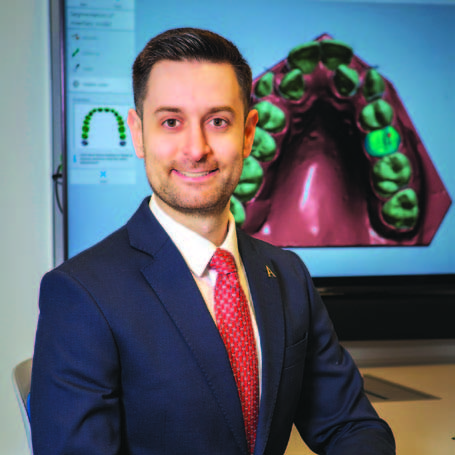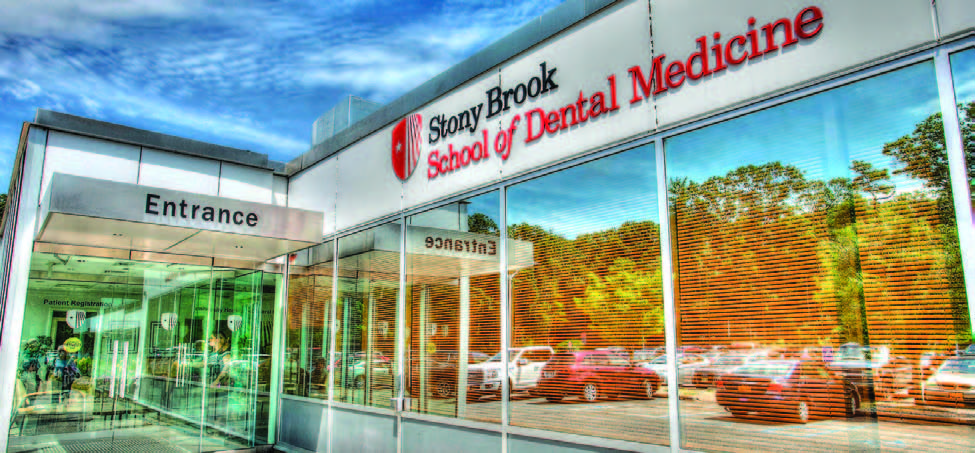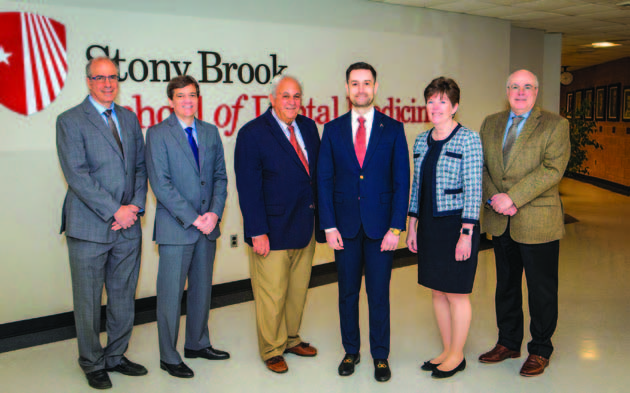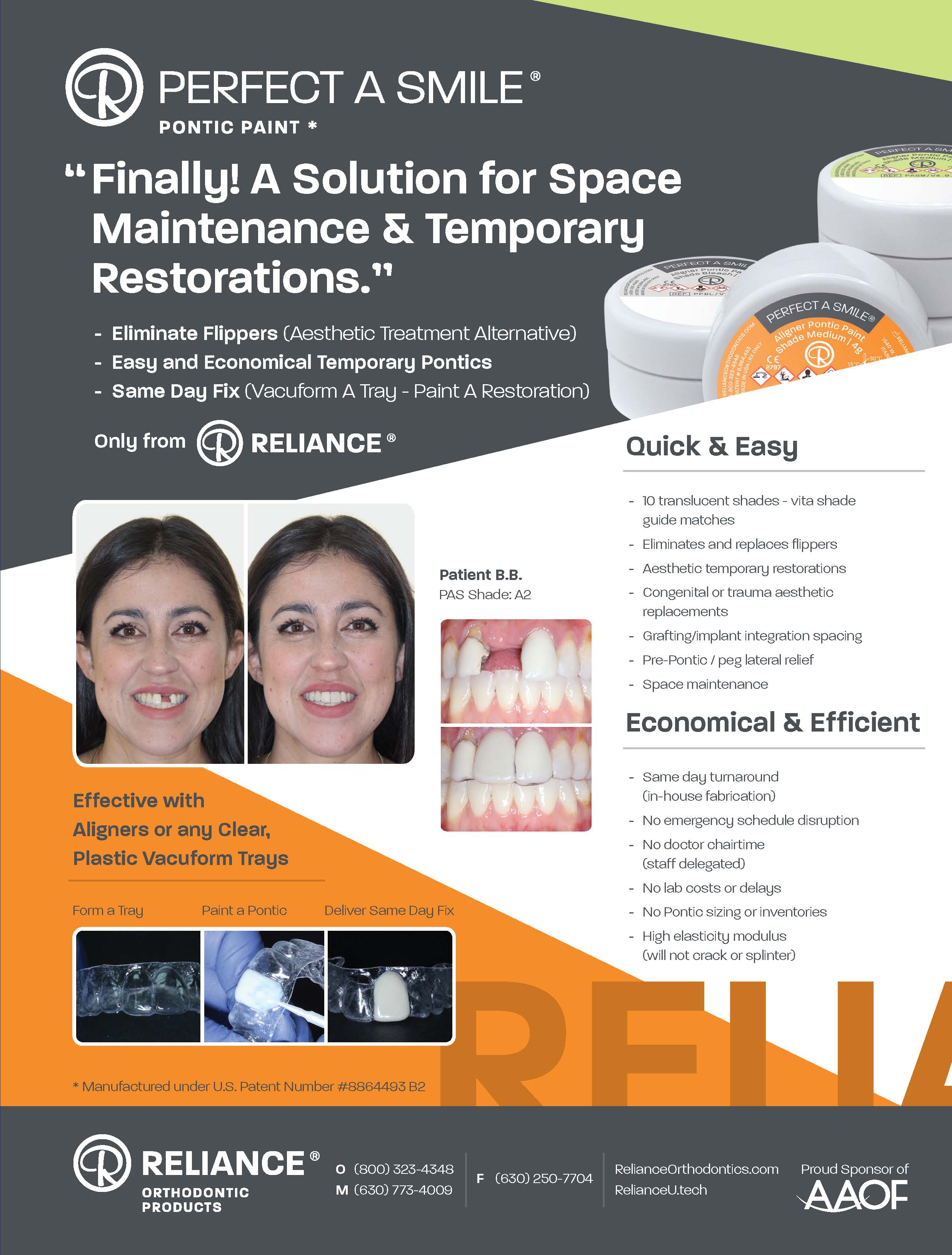2020 Eugene L. Gottlieb JCO Student of the Year: Dr. Saro Atam
The Journal of Clinical Orthodontics is pleased to announce Dr. Saro Atam from Stony Brook University in Stony Brook, New York, as the winner of the 2020 Eugene L. Gottlieb JCO Student of the Year Award, presented by American Orthodontics. Dr. Atam was selected over 24 other students from schools around the United States in a two-stage, months-long competition judged by members of the JCO editorial board. His prize includes more than $8,000 worth of materials and travel from American Orthodontics, JCO, and Dolphin.
The Student of the Year Award is named to honor the legacy of JCO’s Founding Editor, the late Dr. Gottlieb. Dr. Atam is the fifth awardee, joining Dr. Katya Skillestad from Texas A&M University, Dr. Samaneh Mojarrad from the University of Pennsylvania, Dr. Moataz Elmahdy from the University of Rochester, and Dr. Krystian Jarosz from Rutgers University. Stony Brook University is therefore the fifth school to produce a winning student over the five years of the competition.
Any U.S. orthodontic department was eligible to nominate one current student by submitting two letters of recommendation and the student’s personal essay. Each student was then given records from an unpublished case and asked to write a complete treatment plan, including all possible alternatives, within two weeks. In December, three JCO editorial board members narrowed the initial group of 25 nominees to 12 finalists. For the second stage, each of the finalists submitted an ABO board-style case report. Moderated by JCO’s Editor-in-Chief, Dr. Robert Keim, the judging panel included Dr. John Graham of Salt Lake City; Dr. Neal Kravitz of South Riding, Virginia; Dr. Sarah Shoaf of Winston-Salem, North Carolina; and Dr. Peter Sinclair of Los Angeles.
As in past years, the judges were highly impressed by the quality of submissions. JCO will feature each finalist on our Facebook page in the coming months. Congratulations to Dr. Atam and Stony Brook University! Current orthodontic students and faculty can expect the start of the 2021 nomination process in August.
PHILIP B. VOGELS
VP of Marketing and Business Development
Q&A with Dr. Saro Atam
Can you tell us a little about yourself?
I am a dreamer, pulling at the threads of opportunity to weave a story of hard work, struggle, and sacrifice. Though I grew up in Syria, my family is ancestrally Armenian, and I am very proud to carry this heritage with me. My family is my rock and the biggest blessing in my life.
I come from a family of doctors. My father is an oral surgeon, my mother is a general dentist, and my younger sister is a physician. My parents inspired me with their love and dedication toward the field of dentistry. Each dinner conversation at night was quite intriguing. That environment nurtured my preexisting interest in art and design and guided me to an early interest in the dental field. From a young age, I always enjoyed hobbies such as playing the piano, fashion, and interior design, having even then an inexplicable fascination with symmetry, perfection, and beauty. I felt I would be able to apply my natural interests and talents seamlessly into the field of dentistry.
I immigrated to the United States a few years ago because of the drone strikes and bombs that were commonplace around me. It was difficult to be so far away from my family, but I took comfort knowing that our hearts would always be connected despite the war physically distancing us. I found myself alone in a new country, with a dream to rebuild the life I once had.
Why are you pursuing a career in orthodontics?
After I immigrated, I faced the harsh reality that my license overseas could not be used to practice dentistry. I felt a deep sadness that all my years of education and training were not recognized. My inner desire and passion for dentistry encouraged me not to give up and to work harder to pursue this passion in the United States.
I began working as a dental assistant, which gave me an appreciation of the scope of dentistry and broadened my own understanding and ambitions. Working in Los Angeles, Pennsylvania, and New York, I had the opportunity to develop a true understanding of dentistry, including periodontic, prosthodontic, and orthodontic workflows.
Working in these specialty practices for four years gave me a unique understanding of how important each dental specialty is. I developed a strong interest in doing everything possible to preserve natural teeth and my utmost to stabilize the occlusion. Orthodontics was the specialty that would allow me to combine my passion for symmetry, perfection, and beauty to unlock each patient’s epitome of a perfect smile.

Dr. Saro Atam
Can you describe the path that led you to Stony Brook University?
It was a long road to get to where I am today. After being heavily involved in research and working as a dental assistant, I was accepted into the advanced-standing program at the prestigious University of Pennsylvania School of Dental Medicine. I graduated with honors at the top of my class, with a deep-seated passion for orthodontics and periodontics. I appreciated the importance of interdisciplinary education and was eager to start my next chapter.
Stony Brook stood out to me from the beginning. During the interview process, the faculty were extremely approachable and expressed a genuine interest in my story. I felt the support from my chair, Dr. Wellington Rody Jr., and my program director, Dr. Richard Faber, from day one and saw their desire to provide a solid base for me to build a successful future.
Stony Brook lives up to its reputation as a challenging orthodontic residency program that pushed me to excel. The program offers invaluable research opportunities that enhance the resident experience. I knew Stony Brook was where I was meant to be, and match day was a dream come true!

Stony Brook School of Dental Medicine, Stony Brook, NY. (Photo courtesy of Stony Brook University.)
What has surprised you the most during your orthodontic education?
I’ve been fortunate to see a multitude of cases in my residency, which has allowed me to appreciate a variety of unique challenges. It is surprising how many specialties must come together to tailor a multidisciplinary approach and provide the best comprehensive treatment for each patient. Orthodontics requires the provider to visualize the big picture and work together with the other specialties to achieve the end goal.
What has been the most difficult part of becoming an orthodontist?
I have to say the hardest part is the sacrifice involved. It has been over 10 years of commitment and separation from my family’s support system. It has not been easy, but really this has all been a blessing. I grew and learned much along my journey, making me who I am today.
What, so far, has been your most rewarding orthodontic experience?
My most rewarding orthodontic experience was completing the case that I submitted for the JCO Student of the Year competition. There were multiple treatment approaches for the case, and although extraction would have been the traditional approach, the patient was adamant about keeping her teeth. Crafting a treatment plan under the guidance of my attending doctor, Dr. Robert Lopatkin, that would satisfy patient needs and desires while offering the highest quality care was of the utmost importance to me.
As I implemented my plan, I was thrilled to watch everything come into place and see the enhancement in three dimensions as the palatal expander gave the patient a fuller smile in the vertical, transverse, and sagittal dimensions. I was especially delighted that despite the challenges of a bilateral open bite and anterior crossbite correction, the case was completed in about a year. Ultimately, the most rewarding part is the patient’s happiness and satisfaction and the stability of the results.
What has been your most difficult case so far?
As an orthodontic resident, I have experienced firsthand the importance of patient engagement and personal care. My most difficult and rewarding case was the treatment that I provided to a 12-year-old autistic patient. It took multiple treatment-planning sessions to familiarize him with my instruments and explain the treatment. I took extra time to utilize digital technologies—in particular, customized procedural videos—to increase patient participation and understanding of the treatment.
Unfortunately, because of financial considerations, they did not sign up for the treatment that day. A year later, to my surprise, both the patient and his parents returned to the orthodontic clinic ready to start with his treatment. The most rewarding feeling was when I witnessed the patient’s excitement and commitment toward his orthodontic treatment.
Any research projects you’d like to tell our readers about?
My master’s thesis project is investigating the influence of build orientation and layer thickness on the manufacturing of 3D-printed models and in the fit of thermoformed appliances. With the guidance of my research mentors, Dr. Rody and Dr. Cybelle Pereira, I was honored to receive the 2020 Charles J. Burstone Research Aid Award from the AAO Foundation after securing the highest score in that category.
The medical profession is experiencing an exciting amount of technological growth with major advancements in 3D printing. In orthodontics, digital workflows and 3D printing technologies are starting to allow practitioners to offer faster, more affordable, and more efficient patient care than ever before. Besides diagnostic and treatment-planning applications, 3D printing plays an increasing role in facilitating in-house laboratory systems that were previously exclusive to the manufacturing industry and rarely attempted in the ordinary orthodontic office laboratory. I hope my research project will help practitioners develop an efficient in-house workflow for aligners and retainers.

Left to right: Drs. Robert Lopatkin, Wellington Rody Jr. (Chair), Richard Faber (Program Director), Saro Atam, Mary R. Truhlar (Dean), and Steven M. Zove (Associate Dean for Clinical Affairs).
What are your postgraduate plans?
My goal is to build my dream practice, build my life for my future family, and give back to the community. Giving back means so much to me because I wouldn’t be where I am today without the love and support of my community members, mentors, and family. I should also mention that I am a committed learner for life, so I wouldn’t be surprised if I found myself as a student once more, striving to grow my expertise.
What do you think orthodontics will look like in 10 years?
In my observation, it is clear that there will be a major shift in the orthodontic population. Older patients are increasingly seeking orthodontic care, and culturally there is a greater emphasis on image and on dental esthetics in particular. These patients will come to the orthodontist wanting a perfect smile, but they will also have an extensive dental history that needs careful multidisciplinary care. In tandem with the changing population, our tools will evolve as we embrace the digital revolution in dentistry.
Rapid-Fire Round
How can orthodontists thrive in today’s competitive marketplace, particularly with the increase in dentists offering various forms of orthodontics?
As dental education improves across the board and as general dentists see more and more routine orthodontic cases, the average complexity that will be referred to our orthodontic specialty will be higher than it has ever been before. Our profession will remain valuable as we not only take care of the more challenging cases, but also support our colleagues when they need assistance and guidance.
Social media: Should it be a major tool in an orthodontist’s marketing arsenal?
Definitely, social media is a fantastic outlet to provide awareness of what orthodontists do. We really have the opportunity to highlight what makes our practices special. It’s also a great way to network and build enriching professional relationships.
Clear aligners: Are we moving toward too much aligner usage, or are we still just scratching the surface?
At the end of the day, I think it is important to understand that the clear aligner is only a tool, and we need to approach cases with patient needs, practitioner comfort, and treatment objectives in mind. Like any tool, when guided properly, the clear aligner can be a great advantage in modern society, as it may offer excellent clinical outcomes in selected cases.
Digital office: Should orthodontic offices be entirely digital at this point, including all scanning?
Absolutely. The train has already left the station: you are either on it, or you will fall behind as a practitioner. Having a digital office will not only save office space, but it will also enhance the clinical workflow and improve efficiency.
Extraction: Where do you stand on the debate?
To me it is all about patient-centered care, and we have a responsibility to present the treatment options that are most appropriate to patient needs. With the current facial esthetic demands and conservative orthodontic treatment approaches, I believe people are looking for a fuller facial profile and wider smile with a full buccal corridor. I consider myself a conservative orthodontist, however, and when extraction is necessary, it should be presented and recommended to the patient.
Retention: Should patients always be pushed toward permanent retention, and how long should we continue to see them on recall visits?
It really is a case-by-case decision that depends primarily on the original malocclusion, patient expectations, and recommended treatment approach. In addition, I believe it should be a shared decision-making process in which both the patient and the orthodontist evaluate the pros and cons of permanent retention. In my experience, the recall visits should occur one, three, six, 12, and 24 months after debonding. Subsequent follow-up visits should be personalized for individual patients based on retainer type and long-term stability expectations.
Phase I treatment: Overused, underused, or properly used?
While different practitioners have different philosophies about Phase I treatment, I believe when used properly, it may offer tangible psychological benefits to address severe malocclusions. This is especially so when you need to guide growth in a favorable direction in cases of severe skeletal anteroposterior, vertical, or transverse discrepancies. If the malocclusion does not require early intervention, I encourage patients to be placed on recall until comprehensive treatment can be initiated, which will ultimately reduce child burnout and have a positive, lifelong impact. In general, I favor Phase I treatment in patients who have progressive discrepancies that tend to create permanent damage over time, such as crossbites with functional shifts and deep impinging overbites, to name a few.
Accelerated orthodontics: What does the future hold?
I truly believe that this may become another great tool in our armamentarium for patients who prioritize faster treatment. It is a viable tool that will only become more relevant with time. Nevertheless, we need more evidence-based results and better practice guidelines.
Anything else you’d like to add?
Follow your dreams. Let my journey be a testament that hard work and perseverance ignited with true passion can fuel a pathway to success despite all odds



COMMENTS
.